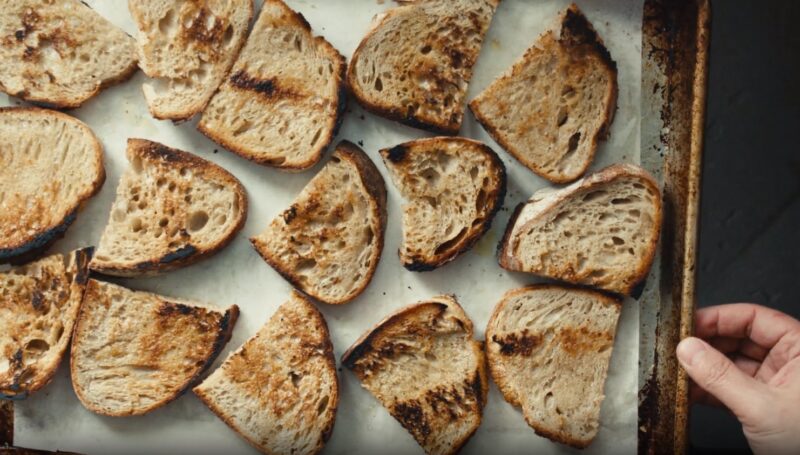Today, I’m excited to share with you a simple yet transformative kitchen skill – toasting bread in the oven. I must admit that I was a bit skeptical about this method, I didn’t believe it could give such tasty results. But I was wrong. Oven-toasted loaf brings a delightful texture and warmth to any meal.
Through trial, and error, and a lot of tasting, I’ve gathered some tips and tricks that I can’t wait to share with you.
What Do You Need?
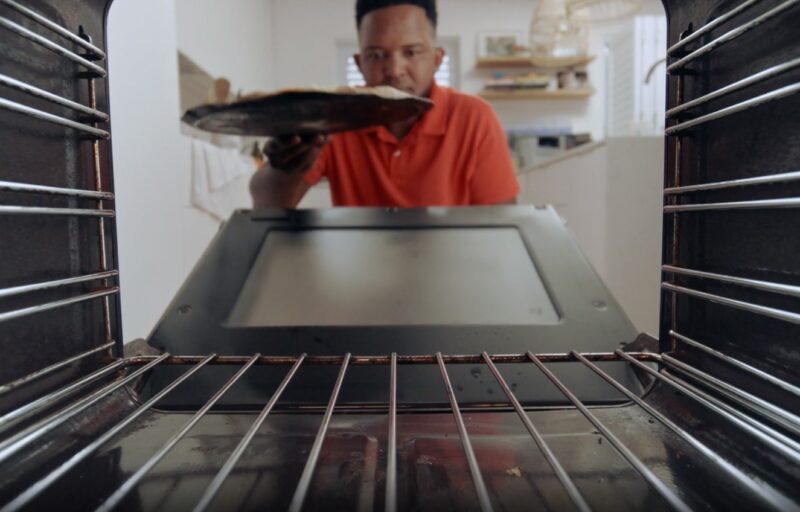
To start oven-toasting, you’ll need a few basic items. First and foremost, you need bread – this could be any type that you prefer, whether it’s a classic white loaf, a healthy whole-grain option, or even an artisan sourdough.
The second essential tool is an oven, which will be used to toast the loaf to perfection. You’ll also need a baking sheet or an oven-safe tray to hold the slices. For those who like to add a little extra flavor, having butter spreads or various toppings on hand will allow for a range of delicious variations.
Preparing the Oven
- Preheat the Oven: The first step in oven toasting is to preheat your oven. This is a crucial step as it ensures that the loaf toasts evenly. The ideal temperature setting is to broil or the highest bake setting, which is typically around 450°F (230°C). This high heat will give your toast a nice, crispy exterior.
- Positioning the Rack: For optimal results, position the oven rack in the upper third of the oven. This placement is key because it exposes the bread to the right amount of direct heat, leading to an even toasting without burning it.
Bread Selection
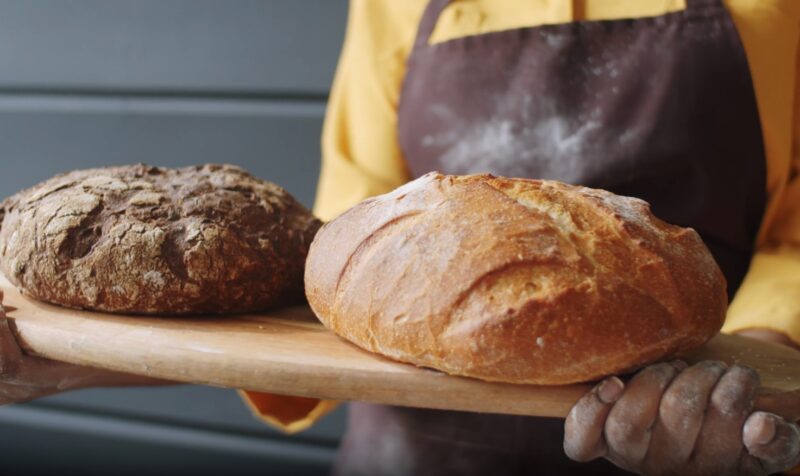
The type and thickness of bread you choose can greatly influence your toasting experience.
- Thickness: If you prefer a crunchier toast, opt for thinner slices as they toast more quickly and evenly. On the other hand, thicker slices will give you a softer, chewier texture but require a longer toasting time.
- Type: The variety of bread also plays a significant role. For instance, a slice of whole grain bread will offer a nuttier, more robust flavor when toasted, while white loaf provides a lighter, more delicate taste. Sourdough, with its distinct tangy flavor, becomes wonderfully crisp and flavorful when toasted in the oven.
Step-by-Step Toasting Guide
Basic Toasting
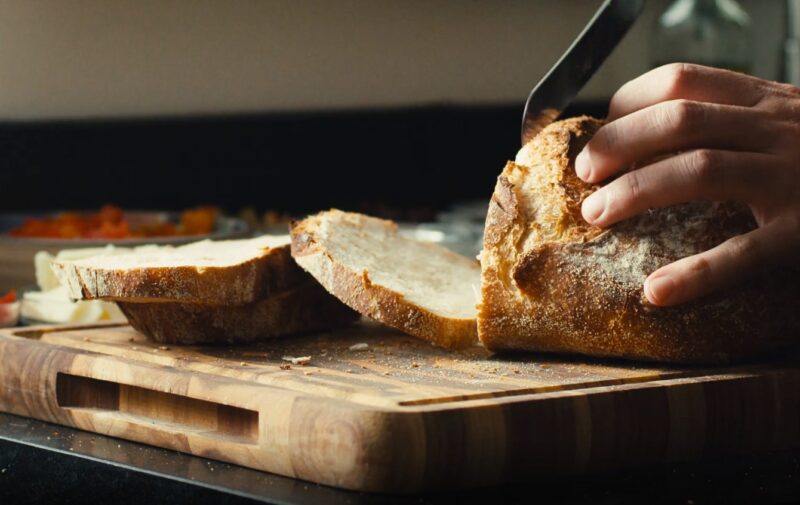
- Lay out your slices on a baking sheet, ensuring they are in a single layer. This arrangement allows for even heat distribution, preventing any slice from being under or over-toasted.
- Carefully place the baking sheet with the slices in the preheated oven, on the rack you positioned earlier. This will expose the bread to the ideal amount of heat for toasting.
- Toast it for about 2-4 minutes before flipping each slice to ensure an even toast on both sides. It’s important to keep a close eye on this process as the slices can go from perfectly toasted to burnt very quickly in a high-heat oven.
Advanced Techniques
For those who want to elevate their toast, here are some additional techniques:
| Toast Type | Ingredients/Steps | Result |
|---|---|---|
| Buttered Toast | Lightly butter one side of the bread before toasting. | Crispy and buttery exterior with a richer taste. |
| Garlic Bread | Combine butter with crushed garlic and herbs, and spread on bread. | Flavorful and aromatic toast, great for meals. |
| Cheese Toast | Add your favorite cheese on top during the last minute of toasting. | Gooey, melted cheese topping for a cheesy delight. |
Why Choose This Technique?
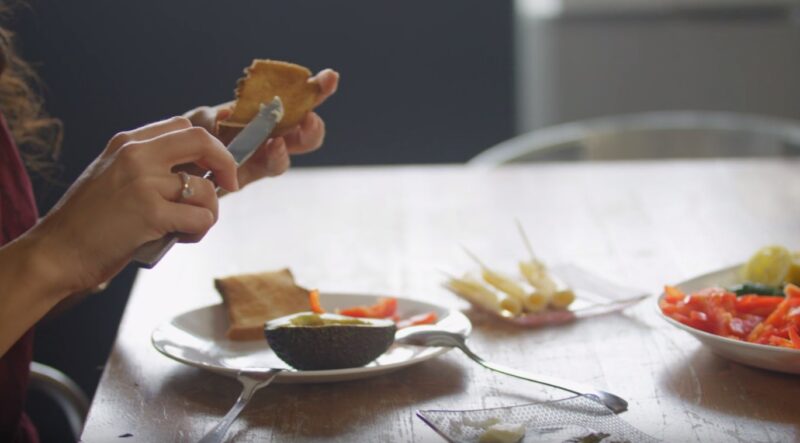
Even Toasting
One of the main advantages of using an oven for toasting is the even distribution of heat. Unlike a toaster, where certain areas might receive more heat than others, an oven surrounds the bread with consistent heat, resulting in an evenly browned and crisped slice.
Large Batches
Oven toasting is ideal when you need to prepare multiple slices at once. This is particularly useful for family breakfasts or when hosting brunch gatherings. You can toast a large batch in one go, saving time and ensuring everyone enjoys their meal together.
Versatility
The oven offers the flexibility to experiment with various types of bread and toppings. You’re not limited to the size and shape constraints of a traditional toaster, allowing for more creativity in your toast preparations.
Troubleshooting Common Issues

1. Uneven Browning
If you notice that your loaf is browning unevenly, a simple fix is to rotate the baking sheet midway through the toasting process. This ensures that all sides of the bread receive equal exposure to the heat.
2. Soggy Toast
To prevent your toast from becoming soggy, especially when using toppings, make sure not to overload the bread. Additionally, a properly preheated oven is crucial for achieving that perfect crispness.
3. Burnt Edges
If you find that the edges of your bread are burning, you can trim the crusts before toasting. Alternatively, adjusting the oven temperature slightly lower can help prevent burning while still toasting the loaf effectively.
Additional Tips for Perfect Toast

Experiment with Temperatures
Experimenting with different oven temperatures can lead to a variety of toast textures. A lower temperature setting will result in a softer, lightly toasted bread, while a higher setting will produce a darker, crispier toast.
This allows you to tailor your toast to your specific liking or to suit different types of dishes.
Try Different Breads
Don’t hesitate to experiment with different bread types. Using unique flour bread and flavor profile when toasted, expanding your culinary horizons. From dense rye bread to fluffy brioche, the possibilities are endless.
Clean Your Oven Regularly
Maintaining a clean oven is important for consistent toasting results. Residue and build-up in the oven can affect the taste and evenness of your toast, so regular cleaning is recommended for the best experience.
FAQs
Can I use aluminum foil or parchment paper on the baking sheet when toasting bread in the oven?
Yes, you can use aluminum foil or parchment paper on the baking sheet. This not only makes cleanup easier but can also help prevent the loaf from sticking to the tray. However, be aware that using these materials might slightly alter the toasting time or the crispiness of the bread, so keep a close eye on it the first few times you try this method.
How do I prevent my toast from becoming too dry or hard in the oven?
To prevent toast from becoming too dry, you can lightly brush the bread with olive oil, melted butter, or a small amount of water before toasting. This adds moisture and can help maintain a balance between crispness and softness.
Also, avoid over-toasting by closely monitoring the loaf and adjusting the oven time as needed.
Is there a difference between toasting homemade bread versus store-bought loaf?
Yes, there can be differences. Homemade bread often has a denser texture and may toast differently compared to store-bought loaf, which is usually more uniform in texture and moisture content.
Homemade bread might require a slightly lower temperature or shorter toasting time to avoid burning or drying out too much.
Can I add toppings to the bread before toasting it in the oven?
Yes, you can add toppings before toasting, but it depends on the type of topping. For example, dry toppings like seeds or herbs can be added before toasting. However, for toppings that can melt or burn (like cheese or sugar), it’s best to add them in the last few minutes of toasting to avoid burning.
How can I make my toast more flavorful without adding extra toppings?
To enhance the flavor of your toast without additional toppings, try using different types of bread. For example, bread with seeds, nuts, or whole grains can offer a more complex flavor profile.
You can also experiment with brushing the loaf with infused oils or a light spread of garlic or herb butter before toasting.
Is it possible to toast frozen bread in the oven?
Yes, you can toast frozen loaf directly in the oven. There’s no need to thaw it first. However, it may require a slightly longer toasting time compared to fresh bread. Keep an eye on it and adjust the toasting time as needed to ensure it doesn’t burn.
This method is convenient and can yield equally delicious results.
Summary
Toasting bread in the oven is a simple yet rewarding culinary skill. It opens up a world of possibilities, from creating the perfect base for your avocado toast to crafting an indulgent, cheesy garlic loaf. With the tips and techniques provided in this guide, you’re now equipped to elevate your toasting game.
Embrace the versatility of your oven and experiment with different breads and toppings to discover your favorite combinations. Enjoy!
